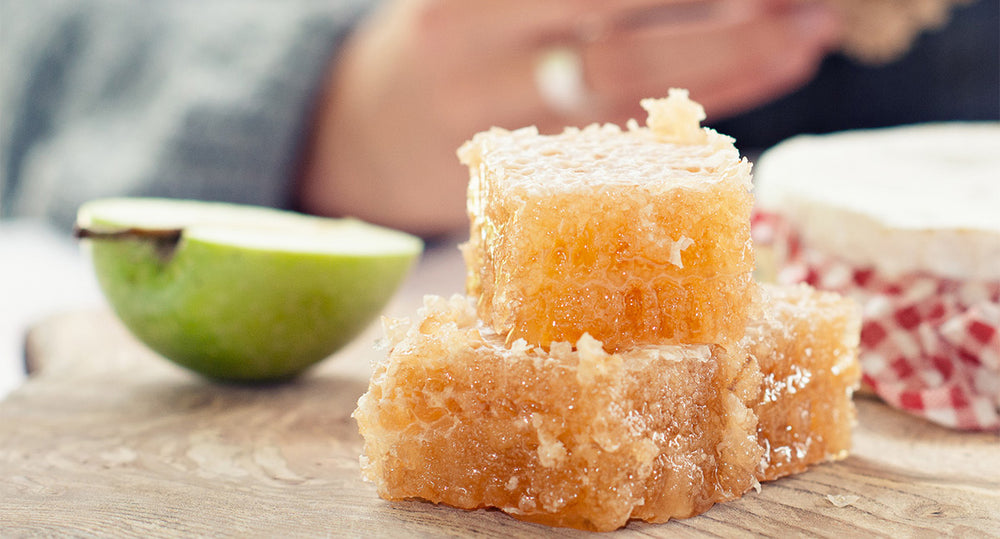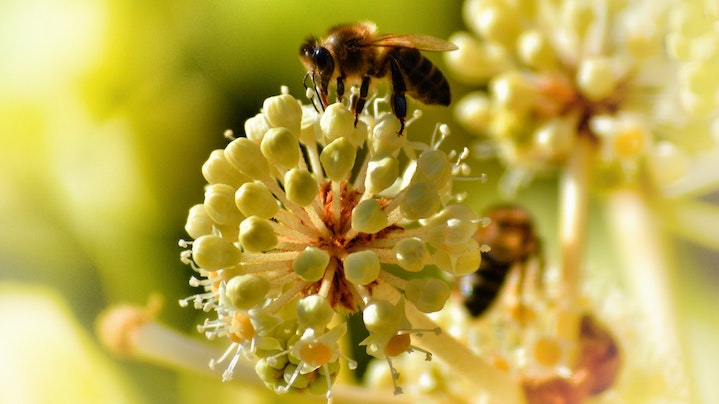The internet is full of stories, legends and facts about honey, in particular active healing honey. The problem is, many of them simply aren’t true. So here, we spoke to our founder, Shamus Ogilvy, aka the Honey Guru, to separate the fact from fiction when it comes to the truth about honey.
What’s the Deal with Organic Honey?
It’s possibly easy to see why someone would dismiss organic honey as a ‘marketing gimmick’. For a product to be organic, it must come from organic sources. Organic carrots for example, must come from an organically farmed land without the use of chemical pesticides or herbicides. This is easy to monitor and certify.
But honey bees travel long distances to visit flowers, which is more difficult to monitor.
However, Necta & Hive honeys are produced by bees visiting the flowers of the Jarrah and Red Gum trees (both from the eucalyptus family) grown in their native homelands of Western Australia.
There are strict guidelines as to what can and cannot be used in the state and as a result, pesticides are strictly limited. Western Australia prides itself on being one of the most pest and disease free agricultural areas in the world. Robust quarantine measures help to maintain this status and minimise the need for chemical pesticides.
Necta & Hive honeys are produced by bees foraging in areas of Western Australia that are pesticide free. The honey is collected and jarred with no heat or pasteurisation treatments, making the honey entirely natural.
There is no organic honey produced in the UK. The UK is simply too small to limit the honey bees to clearly defined areas of land like they can be in countries such as Australia, New Zealand and Brazil.
Having an entirely natural honey sets us apart from other honey brands that are considerably cheaper but also considerably lacking in active, healing compounds.
Labelling honey as raw or talking about the benefits of raw honey is a contentious subject. In the UK, no one, including us, is allowed to call their honey raw. I’ve spoken to my local authority to ask why they have an issue with the word ‘raw’ and have even discussed it with the Food Standards Agency and representatives from the EU, and to my frustrations, the issue is still up for discussion!
But rest assured, that our honey is unpasteurised, which means it’s had no heat treatment at all, and has only had some minimal filtering to remove bee parts. We’re proud of our honey which is just as nature intended.
Is Supermarket Honey Pure?
Sadly, it’s common for supermarket honey to be blended. This means that the honey has been mixed with another type of syrup, that is cheap and low quality.
As a general rule, honey that is labelled as coming from outside of the EU or the origin or floral type is in a very small print, hidden unless you really look for it, it’s probably been blended.
I’ve seen honeys where more than half of the contents have come from cheap, high glucose honey imported from China, which doesn’t need to be stated on the packaging.
If you’re in doubt, remember this, the higher the glucose level and lower the fructose, the cheaper the honey will be. Honey with a high fructose level and low glucose, such as active healing honeys from Necta & Hive, will quite rightfully have a higher price tag since they’re of a significantly higher quality.
Choosing Honey Wisely
The colour and flavour of honey depends on many factors. High quality, unpasteurised active healing honeys may have subtle changes in their colour and taste with each batch, reflecting the fact that it’s a completely natural product.
The flowers that the honey bees have visited will have the most hold over the colour and taste of a honey. For example, Necta & Hive Jarrah honey has a sweet, caramel like flavour.
Other factors that influence the flavour of honey are the level of rainfall in a season, the amount of sunshine, the amount of water naturally present in the honey and the concentration of HMF (hydroxymethylfurfural) that develops when certain sugars are dehydrated (as they would be in heat treated, pasteurised honeys).
Blended supermarket honey will always be uniform in colour as it’s not all from the same hives or even countries.
If you’re looking for pure honey that tastes amazing and has had nothing added or taken away, browse of collection of Necta & Hive honeys.






